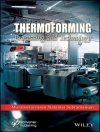Compiled by a new editorial team, this volume provides an invaluable resource covering many aspects of organometallic and coordination chemistry. The book has been developed through contributions from future leaders in organometallic chemistry at the forefront of their research. With continued increases and expansion of chemical literature, researchers can find it challenging to keep up with recent developments. The volume provides a comprehensive overview of emerging themes and key developments in the field. The reviews in this volume reflect current interests and range in scope from the application of heterobimetallic complexes in catalysis, to progress in dinitrogen functionalisation, the role of Lewis acids in Ni-catalysis, hydrogenation of CO2, and the photo-induced activity of main group metals and metalloids. It also includes computational strategies for modelling excited states in organometallic chemistry. This volume is a key reference for researchers in academic and industrial settings.
Table of Content
- Synthesis and catalytic applications of heterobimetallic complexes involving bis-N-heterocyclic carbenes
- Preparation and reactivity of compounds containing group 10–group 13 element bonds
- The roles of Lewis acids in nickel catalysis
- Recent advances in iron-catalysed hydroboration
- Development of Mn(I)-based catalysts for CO2 hydrogenation/dehydrogenation in the context of hydrogen storage/release systems
- Recent progress in dinitrogen functionalization: stoichiometric and catalytic reactions
- Photochemistry of main group metals and metalloids
- Catalysts based on the heavier group 13 elements for the cycloaddition of carbon dioxide to three-membered saturated heterocycles
- Computational strategies for modelling excited states in organometallic chemistry












